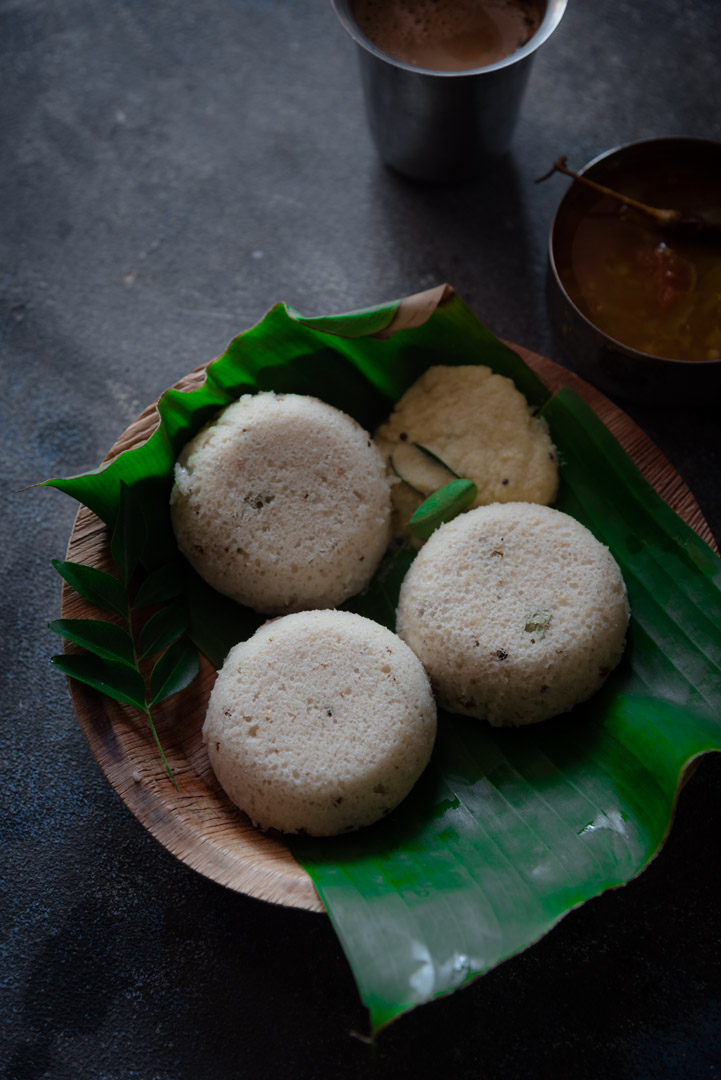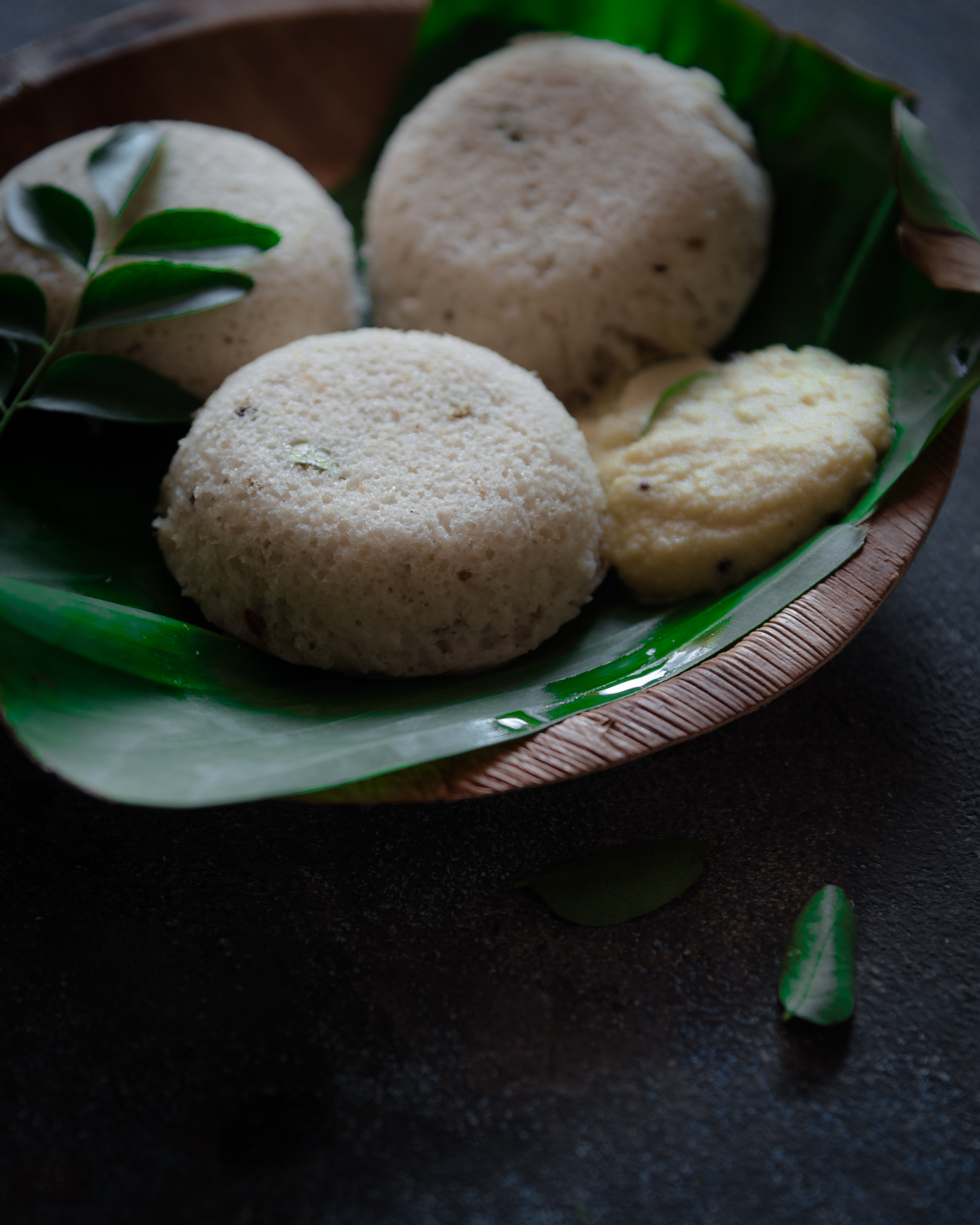
Kanchipuram Idli is the traditional prasad offered in the Varadharaja Perumal Temple at Kancheepuram in Tamil Nadu. These idlis mixed with spices are cooked in bamboo casings lined with dried leaves which adds to the flavour of idlisKancipuram idli is also knows as “koil/kovil idli”. Koil/ kovil is the Tamil name for a distinct style of temple architecture. Since Kachipuram town is known for its temples, idlis from this region is called temple idlis or Kanchipuram Idlis.
The speciality of these idlis are the use of whole pepper, cumin, curry leaves, dried ginger and asafoetida in the batter and then steamed. These idlis are originally steamed in a leaf called mandharai leaves but in the absence of that leaves in Odisha, I cooked it in banana leaves which are considered as a great alternative to it as Banana leaves has its own unique flavour. it is generally served in south indian temples as prasadam but can also be served as morning breakfast with sambar and chutney.
The steaming method and fermentation of batter is same as regular batter but the shape and texture of the idly are different. For this recipe use a short grain fat par boiled rice known as Salem Rice in Tamilnadu which will make the idli soft.

For the batter
- 4 cups parboiled raw rice
- 1 cup whole white urad dal
- 1/2 cup Poha (Optional)
- 2 teaspoon fenugreek seeds
- 1 teaspoon salt
Spices
- 2 teaspoon ghee
- 2 sprigs curry leaves, finely chopped
- ½ teaspoon asafoetida / hing
- 1 teaspoon dry ginger powder
- 1½ teaspoon cumin seeds, crushed
- 1½ teaspoon black pepper,crushed
INSTRUCTIONS
- Soak Fenugreek Seeds, Urad Dal and Idly Rice for a minimum of 3-4 hours. Soak everything separately in lots of water.
- Grind the soaked fenugreek seeds with half a cup – 1 cup of water for 3-4 minutes until they are finely ground and have fluffed up
Grinding fenugreek seeds separately contributed to lot of fluffiness. - Add the soaked and drained urad dal to the ground fenugreek and grind urad dal with little water.
- Grind the soaked and drained rice until smooth. Add just enough water while grinding. Once ground, transfer the batter to the dal mixture bowl and mix well. Let there be lot of space for the batter to expand while fermenting. Do not fill up to the brim.
- Soak 1/2 Cup poha in 1 cup of water for 5 minutes . Grind in a mixie and add to the batter. Poha makes for softest idlis.
- Heat ghee in a pan and add in the crushed cumin pepper mixture and curry leaves. Once the curry leaves are crisp, switch off the flame. Add in the dry ginger powder and asafoetida. Toss well and add it to the batter.
- Add salt to the batter before fermenting in summers and add it after fermenting in winters because Salt inhibits fermentation and interferes with good bacteria to a certain extent. Cover the pan with a lid and allow it to ferment for 8-10 hour
- Put some water in an idly vessel and put it on medium flame. now heat the banana leaf slightly to make it flexible. fold slightly and place in a small cup. grease the cup with oil.pour in prepared idli batter into the cups filling ¾.place the cups into the steamer and steam for for 6-7 minutes.
- Do not allow it to over cook. It might become hard and dry. Just keep an eye and remove the idlis after 6-7 minutes. Do not remove the idlis immediately. It might stick. Leave it undisturbed for 4-5 minutes and then spoon it out.
- Serve with chutney and sambar.
This post is a continuation series on #flavorsof regionalcooking. Do check other posts in this series like Chicken Chettinad, Chettinad Masala,Mangalorean Fish Curry,Pallippalayam Chicken Curry,Kundapur Masala Powder

Comments are closed.